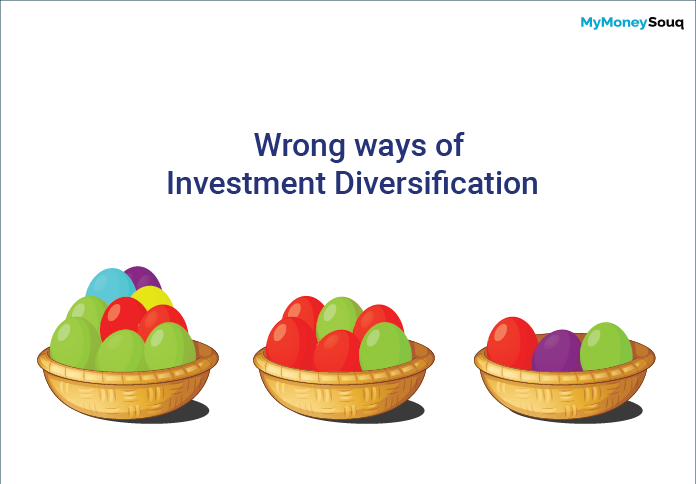Investment Diversification is an important concept that every investor needs to be aware of. It is considered vital because markets are volatile and unpredictable hence diversifying investments will reduce the risk as per the famous saying, “Don’t put all the eggs in one basket”. When you divide your investment money and invest in different products then if one market drops the other one will compensate for it.
Though the concept of diversification can seem simple where the investor needs to just accommodate the investment into different assets and form a portfolio. But the assets available in a portfolio is what matters to be a successful investor. An investor needs to pick different assets according to the investment goal and risk appetite. The assets should be like if one falls then the other one rises that is they have to be inversely proportional to each other. If they are directly proportional then the investor would incur a loss when the market drops.
Check: Best Investment Strategies according to Age
Common Mistakes while Diversifying Investments
While diversifying the investments, some common mistakes an investor make are,
-> Different products in a Portfolio
Of course, there are various investment options and it can be overwhelming for a new investor to pick from them. But an investor should pick assets only that are beneficial for him by keeping the financial goals in mind. For a person who is planning to buy a house in the next 5 years, investing in long-term options like stocks or mutual funds may not help.
Your investment asset must resolve your purpose of investment. Each investment asset will have a different goal and picking the wrong one for your portfolio will not solve the purpose. Not just that all the assets in the portfolio should work towards that goal. If your financial goal is a short-term one then pick the assets that fit rightly. You can’t have fixed deposits combined with mutual funds if you are looking to break the investment in 3 years. Also, your portfolio shouldn’t have all the assets which will be difficult to manage and can get risky.
First, understand your financial goal then list down the investment options according to the goal. Check what can be the best fit for the goal and only a few assets according to the investment amount. Ensure these assets are not directly proportional to each other. For example, if Asset A experiences a downfall then Asset B’s value should increase then only you will not be pushed into complete risks.
Also, know: Match your Investments with Financial Goals
-> Over-Diversifying
Over-Diversifying is another mistake an investor must avoid. It means having multiple options from the same asset class like too many stocks, multiple properties, multiple funds, etc. For example, having 1000 stocks in one company may not be the right risk management way. Similarly, buying properties will increase the buying costs that are involved. Having too many of any asset may not be that useful as you end up putting less money into each fund and end up getting average returns. Diversification is meant to mitigate your risk and increase the returns. Hence over-diversifying should be avoided.
Owning too much of anything that is more than what is required will reduce the chance of getting exceptional returns.
-> Not diversifying geographically
Most investors tend to pick their home country for investment or the country they are residing in. They overlook the other investment options that are available globally. Investors are supposed to take advantage of the economic growth of other nations and invest accordingly. Investing globally will give great exposure to international markets, emerging places and companies.
Read: Different Investment options for Expats in Dubai
-> Assuming Diversification as a one-time activity
Investors tend to assume investment diversification as a one-time activity. Once you go through the assets and set the portfolio it is done but NO. Investment diversification is definitely not a one-time activity. Timely checking and rebalancing the portfolio is much needed and if an investor fails to do so, will not experience the returns as expected as the existing assets may not fit the needs or goals of the investor.
Overall, an investment portfolio should be a good balance of risk and returns. This happens only when you understand an asset before adding it to your diversified portfolio. The aim of investment diversification is to avoid major market disruptions and fulfil your financial goals as planned.

